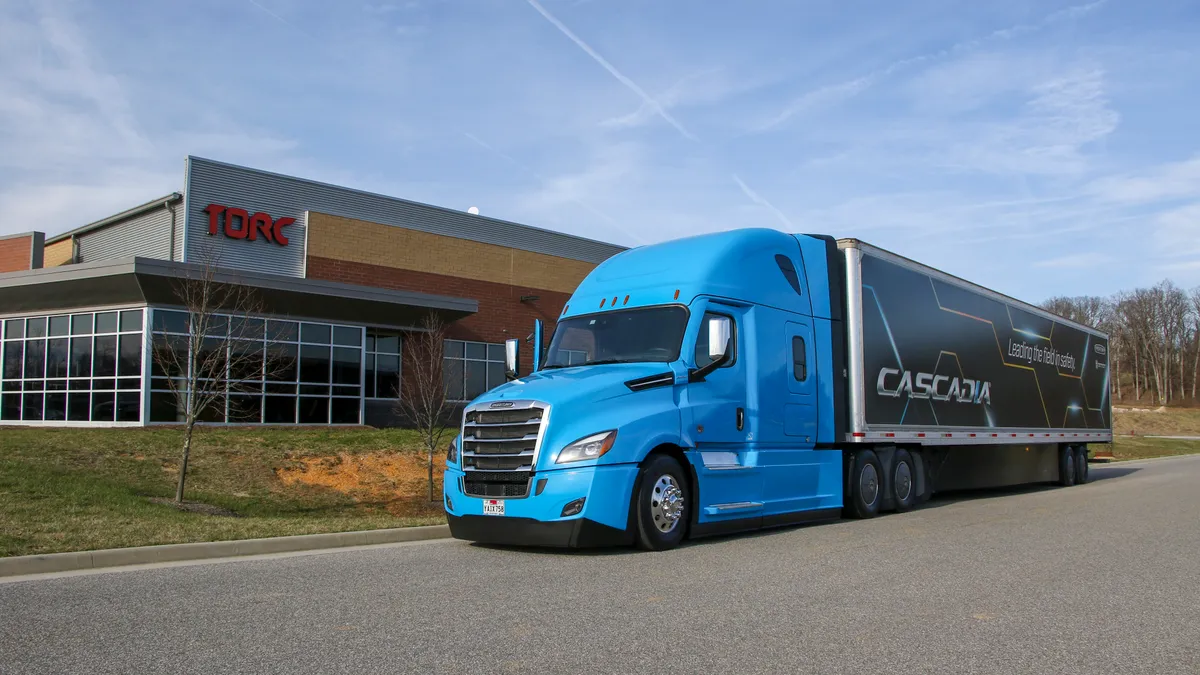Dive Brief:
- Daimler Trucks started a new office, the Connectivity Services Group, to work on truck connectivity software and services for global clients, the OEM announced on Wednesday.
- Sanjiv Khurana, currently head of Digital Vehicle Solutions, will lead the group to "set up the framework for fast and scalable software development and product management."
- Daimler said it will consolidate its digital connective software applications, including in-vehicle software and cloud platforms, into one architecture. The efforts will also include partnerships with other technology providers, including suppliers of internet-connected products.
Dive Insight:
OEMs tout connected truck technologies as a means to reduce downtime and improve maintenance scheduling. Fleets see connectivity as a time-saver for maintenance workers and truck drivers, who will no longer have to schedule repairs, because the truck's artificial intelligence systems automatically communicate with fleet managers.
Daimler's move is an effort to better integrate connectivity systems, making the communication and predictive maintenance processes more seamless. A lack of a uniform communication architecture within tractor cabs is a challenge OEMs have sought to fix, said Wally Stegall, director of business development at Morey.
One thing that would solve the problem for OEMs and fleets is a universal application programming interface, which also serves as an "incorruptible ledger" of the tractor and the communication components, Stegall said. Such a universal system would make sure the data-gathering and communications aspects are working together, even before they transmit data outside of the cab to the fleet managers.
"In order to have good communications off the vehicle, you have to have good communications within the vehicle," said Stegall.
OEMs and vendors have worked to improve connected technology over the years, and some OEMs have produced links between the truck and maintenance departments, communication without need for the driver to take part in. Connectivity links all data-producing parts, including video cameras and engine sensors, and it automatically feeds data into an uplink so fleet managers can interface with that data.
"Connectivity has already transformed trucking and logistics, but Daimler is committed to pushing the technology even further," Khurana said in the news release. Vehicle operations, fleet productivity and driver experiences will all be enhanced via Daimler's group, Khurana said.












